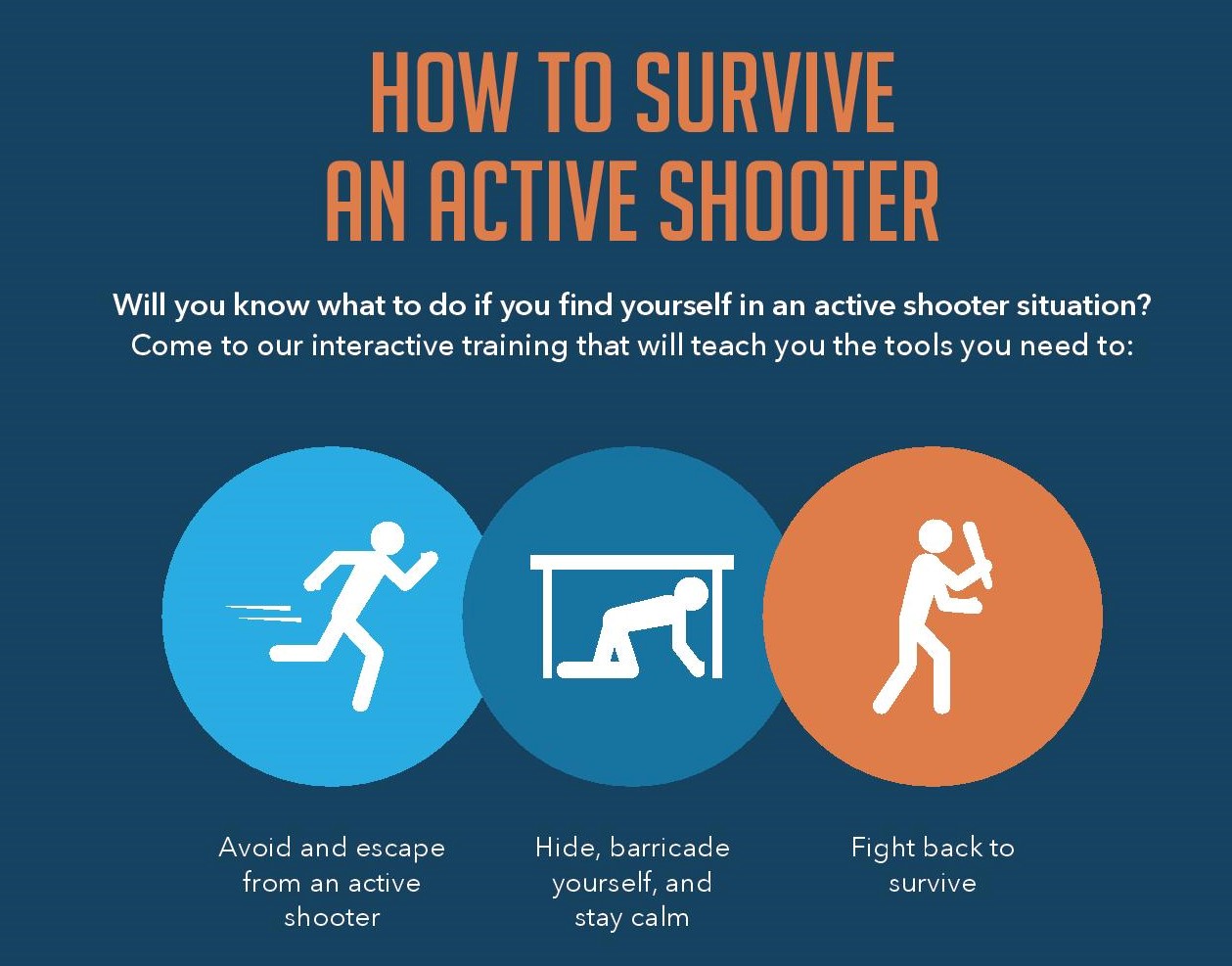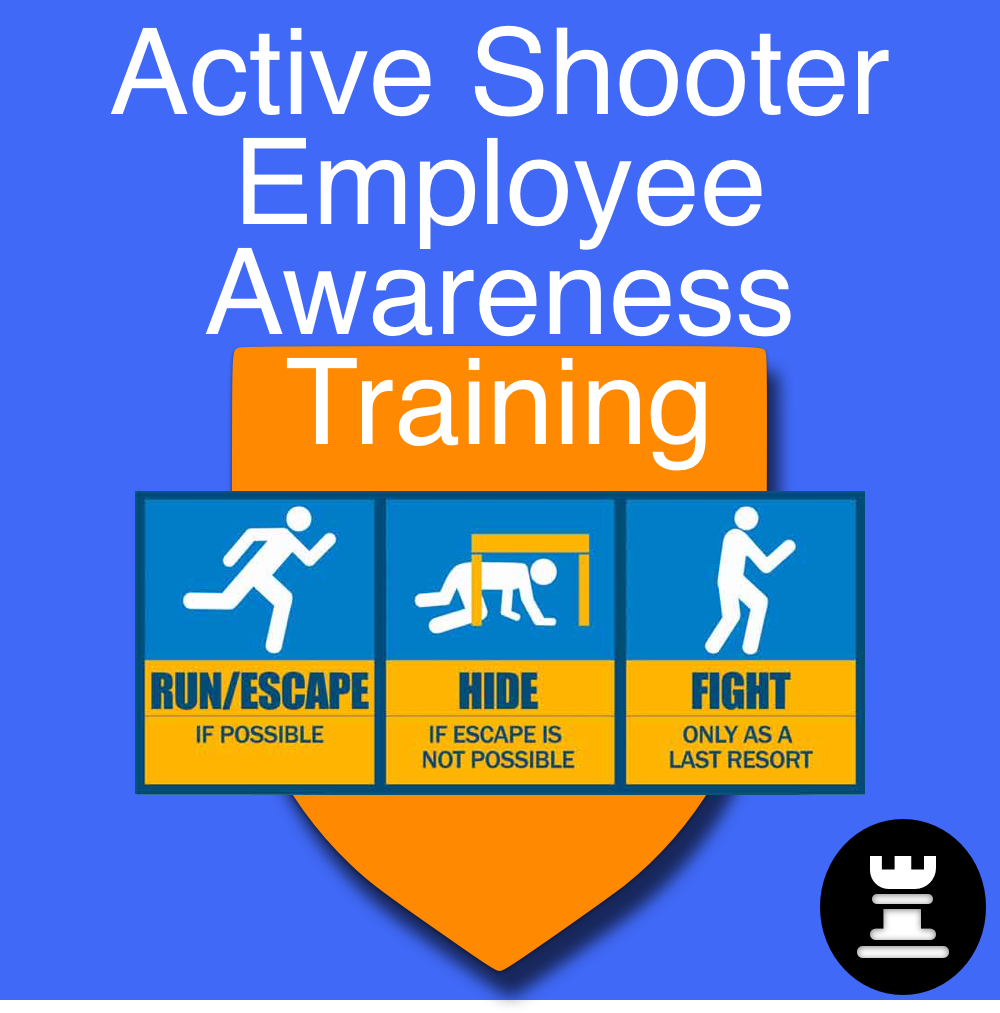How Active Shooter Training Can Save Lives in Crisis Situations
How Active Shooter Training Can Save Lives in Crisis Situations
Blog Article
The Important Role of Energetic Shooter Training in Enhancing Emergency Situation Feedback Methods in Different Environments
Active shooter training has actually emerged as an essential part in refining emergency response techniques throughout varied settings, from educational organizations to company settings. The effectiveness of such training pivots on numerous factors, including the certain context in which it is applied and the ongoing commitment to improvement.
Value of Energetic Shooter Training
In a period noted by increasing worries over public safety and security, the importance of active shooter training can not be overstated. As occurrences of weapon physical violence in public rooms continue to increase, companies across different sectorsâEUR" universities, work environments, and public venuesâEUR" are identifying the requirement of preparing their workers and communities for such emergencies. Active shooter training outfits individuals with crucial abilities and expertise to react effectively in dangerous situations, possibly lessening casualties and conserving lives.
The training not only focuses on prompt reaction activities, such as emptying and shielding in location, however likewise fosters a culture of awareness and preparedness. By participating in sensible simulations and conversations, participants can recognize potential vulnerabilities within their setting and establish strategies for mitigating dangers. In addition, such training enhances communication and coordination amongst group participants and first responders, making sure a much more unified strategy during situations.

Key Elements of Effective Educating
Efficient active shooter training consists of a number of essential elements that enhance readiness and feedback capacities. Primarily, practical scenario-based simulations are crucial. These workouts submerse individuals in high-stress circumstances that simulate possible active shooter events, allowing them to practice decision-making and physical actions under stress.
Additionally, training should include a complete understanding of interaction methods. Individuals need to be well-versed in just how to pass on essential information to police and fellow individuals during an event. This consists of making use of emergency situation signals and understanding the chain of command.
Another essential component is the incorporation of mental health recognition. Training needs to resolve the emotional influence of energetic shooter circumstances, furnishing participants with coping strategies and sources to sustain their mental wellness post-incident.
Additionally, routine correspondence course are important to make sure that skills remain sharp and knowledge is up-to-date. This continuous education reinforces the importance of readiness and cultivates a society of safety and security within organizations.
Training for Different Settings
Energetic shooter training must be tailored to the details settings in which people operate, as each setting presents unique obstacles and characteristics. Training in a company office will vary substantially from that in an institution, this shopping mall, or medical care facility. Each environment demands a personalized method that takes into consideration aspects such as layout, populace thickness, and available retreat paths.
In universities, training programs must emphasize lockdown treatments, communication protocols with law enforcement, and techniques for protecting trainees. On the other hand, in corporate settings, training might concentrate on discharge techniques, identifying questionable actions, and utilizing readily available sources for protection or shelter-in-place scenarios.
In addition, public locations like shopping malls or sporting events call for extensive crowd monitoring strategies, with a focus on quick reaction sychronisation amongst safety personnel and neighborhood police.
In health care settings, training must deal with particular vulnerabilities, such as the existence of people who may require immediate support. By comprehending the unique characteristics of each atmosphere, companies can develop reliable training components that enhance readiness and enhance general safety and security, ensuring that individuals are furnished to respond properly in different dilemma circumstances.

Building a Culture of Awareness
Developing a society of understanding is fundamental to boosting precaution in any type of atmosphere, as it empowers people to acknowledge prospective risks and respond proactively. This culture necessitates continual education and learning, open interaction, and the assimilation of security procedures into day-to-day regimens.
Organizations ought to focus on active shooter training as component of their overarching security technique, ensuring that all personnel comprehend the specific threats connected with their setting. Routine training sessions grow watchfulness and knowledge with emergency treatments, urging individuals to stay sharp to unusual habits or circumstances.
Additionally, cultivating a culture of understanding entails creating an atmosphere where reporting dubious activity is both encouraged and stabilized. active shooter training. published here Employees have to really feel comfortable sharing their worries without anxiety of retribution. This visit this page can be achieved via clear channels of interaction and encouraging leadership
Furthermore, involving in area partnerships can heighten understanding past business boundaries, promoting a shared obligation for security. Campaigns such as workshops, drills, and informational sessions can even more enhance collective watchfulness. Inevitably, building a culture of awareness not only prepares individuals for potential crises but also enhances the general durability of the company versus dangers.
Reviewing Educating Performance
While normal training sessions are important for readiness, examining their effectiveness is equally essential to make sure that workers are furnished with the needed abilities and understanding to respond properly in case of an active shooter situation. Evaluation procedures need to consist of both qualitative and quantitative assessments to measure the impact of training on response capabilities.
Studies and feedback from participants can give useful understandings into the training's relevance and applicability. In addition, carrying out useful drills and simulations allows companies to observe real-time decision-making and teamwork under stress. Examining the results of these exercises aids recognize strengths and locations for renovation.

Involving stakeholders, including police and emergency situation responders, in the examination procedure can boost integrity and give a comprehensive point of view on training effectiveness (active shooter training). Inevitably, an organized evaluation method makes sure that energetic shooter training continues to be an essential part of a company's emergency situation response strategy, fostering a safer environment for all
Conclusion
Energetic shooter training is crucial in strengthening emergency feedback approaches throughout diverse settings. Eventually, the implementation and analysis of efficient training programs contribute substantially to reducing the influence of active shooter situations, consequently protecting lives and boosting neighborhood resilience.
Report this page